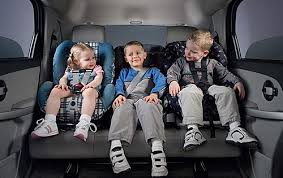 Child Passenger Safety Week is Sept 15th – 21st, 2013 and National Seat Check Saturday is Sept 21st
Child Passenger Safety Week is Sept 15th – 21st, 2013 and National Seat Check Saturday is Sept 21st
Car crashes are a leading cause of death for children 1 to 13 years old. Many times deaths and injuries can be prevented by proper use of car seats, boosters, and seat belts. Listed below are many resources for child passenger safety. We hope that they will provide you all the information you need to keep your little ones safe.
Follow these guidelines for child passenger safety from the CDC website:
- Birth through Age 2 – Rear-facing child safety seat. For the best possible protection, infants and children should be kept in a rear-facing child safety seat, in the back seat buckled with the seat’s harness, until they reach the upper weight or height limits of their particular seat. The weight and height limits on rear-facing child safety seats can accommodate most children through age 2, check the seat’s owner’s manual for details.
- Between Ages 2-4/Until 40 lbs – Forward-facing child safety seat. When children outgrow their rear-facing seats (the weight and height limits on rear-facing car seats can accommodate most children through age 2) they should ride in forward-facing child safety seats, in the back seat buckled with the seat’s harness, until they reach the upper weight or height limit of their particular seat (usually around age 4 and 40 pounds; many newer seats have higher weight limits-check the seat’s owner’s manual for details).
- Between Ages 4-8 OR Until 4’9″ Tall – Booster seat. Once children outgrow their forward-facing seats (by reaching the upper height and weight limits of their seat), they should ride in belt positioning booster seats. Remember to keep children in the back seat for the best possible protection.
- After Age 8 AND/OR 4’9″ Tall – Seat belts. Children should use booster seats until adult seat belts fit them properly. Seat belts fit properly when the lap belt lays across the upper thighs (not the stomach) and the shoulder belt fits across the chest (not the neck). When adult seat belts fit children properly they can use the adult seat belts without booster seats. For the best possible protection keep children in the back seat and use lap-and-shoulder belts.
- All children younger than 13 years should ride in the back seat. Never place a child in the front seat facing an airbag.
For information about choosing the right car seat, installation guidelines, and child seat inspection station locations visit Parents Central.
If you think there is a resource missing from this list, email us at email@completelykidsrichmond.com
Thank you for keeping the kids of RVA safe!

 Birthdays
Birthdays